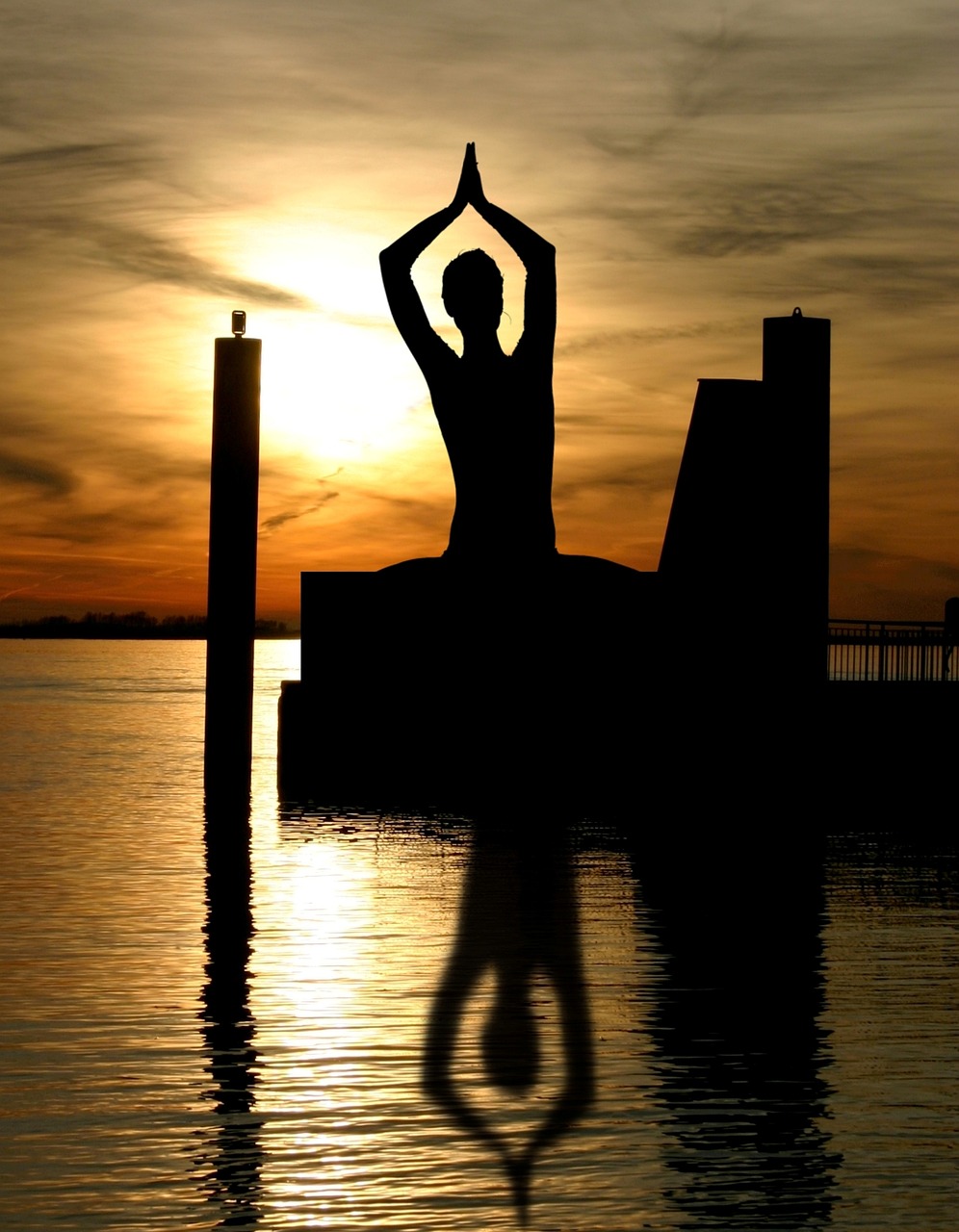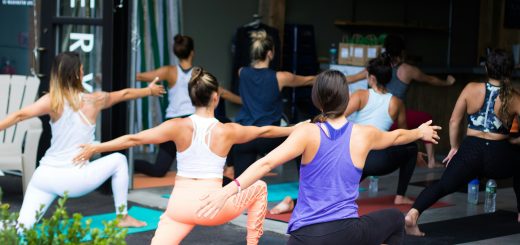Yoga’s Evolution: From Ancient Texts to Modern Styles

Before diving in, please note: This post is for informational purposes only. If you’d like to know more about how we approach topics, feel free to check out our friendly Disclaimer Page.
Hey there, amazing readers! 🖐️ Just a quick note: yes, we know there are a lot of ads here. Trust us, we get it—it’s not the prettiest look, but they help us keep this blog alive and kicking. Those pesky little ads cover the costs of all the behind-the-scenes magic, from hosting and tech stuff to creating content we hope you’ll love.
We’re committed to delivering quality posts, and your support (even just sticking around despite the ads) means everything to us. So, bear with us, and thanks for helping us keep the good vibes rolling. Now, on to the fun stuff! 😉
TRANSLATE BUTTON AT THE END OF THE ARTICLE
Introduction: Exploring Yoga’s Evolution
Yoga, a practice that has stood the test of time, has undergone a fascinating evolution from its origins in ancient texts to the myriad modern styles practiced worldwide today.
This ancient discipline, rooted in spiritual and physical wellness, has transcended cultural boundaries and evolved to meet the needs of diverse practitioners in the modern world.
From the classical teachings of Patanjali to the dynamic and innovative styles of the 21st century, yoga has continually adapted and transformed while staying true to its core principles.
In this article, we will delve into the rich history of yoga, exploring its evolution through the ages and tracing the development of various styles that have emerged over time.
Ancient Texts: The Origins of Yoga
The origins of yoga can be traced back to ancient texts such as the Vedas, Upanishads, and the Bhagavad Gita.
These texts, which date back thousands of years, contain the philosophical and spiritual foundations of yoga.
The Vedas, considered the oldest scriptures of Hinduism, mention practices related to meditation, ritual sacrifice, and breath control, all of which are integral components of yoga.
The Upanishads delve deeper into the concept of self-realization and the union of the individual soul with the universal consciousness, laying the groundwork for the spiritual aspects of yoga practice.
The Bhagavad Gita, a revered text in yoga philosophy, discusses the path of selfless action and devotion as a means to attain spiritual enlightenment.
Classical Yoga Practices and Philosophies
Classical yoga, as outlined in Patanjali’s Yoga Sutras, is often referred to as the Eightfold Path of Yoga.
This system encompasses ethical guidelines, physical postures, breath control, meditation, and contemplation, all aimed at achieving mental clarity and spiritual liberation.
Patanjali’s teachings serve as a comprehensive guide to the practice of yoga, offering a structured approach to self-discipline and self-realization.
Classical yoga emphasizes the importance of ethical conduct, self-discipline, and the cultivation of inner peace through meditation and mindfulness practices.
Influence of Gurus and Teachers
Throughout history, influential gurus and teachers have played a significant role in shaping the evolution of yoga.
From Swami Vivekananda, who introduced yoga to the Western world in the late 19th century, to modern-day teachers like B.K.S.
Iyengar and Pattabhi Jois, these individuals have contributed to the spread and popularization of yoga worldwide.
Their unique teaching styles and philosophies have inspired countless practitioners to deepen their practice and explore new avenues of self-discovery.
The guidance of gurus and teachers continues to be a cornerstone of the yoga tradition, providing students with mentorship, knowledge, and inspiration on their spiritual journey.
Modernization and Globalization of Yoga
The modernization and globalization of yoga have led to a proliferation of diverse styles and approaches to the practice.
As yoga spread beyond its traditional boundaries, it underwent various adaptations to suit the needs and preferences of practitioners around the world.
This evolution has resulted in the emergence of hybrid styles, fusion practices, and innovative techniques that combine elements of traditional yoga with contemporary fitness trends.
The global popularity of yoga has made it more accessible to people of all ages, backgrounds, and fitness levels, contributing to its widespread appeal and relevance in the modern era.
Hatha Yoga: The Foundation of Modern Styles
Hatha yoga, a branch of yoga that focuses on physical postures and breath control, serves as the foundation for many modern yoga styles.
The practice of Hatha yoga aims to balance the body and mind through a series of asanas (postures) and pranayama (breathwork).
This gentle and accessible form of yoga is suitable for beginners and experienced practitioners alike, offering a holistic approach to health and wellness.
Hatha yoga classes typically include a combination of stretching, strengthening, and relaxation techniques, making it a popular choice for those seeking a well-rounded practice that nurtures both the body and spirit.
Vinyasa, Ashtanga, and Power Yoga
Vinyasa, Ashtanga, and Power Yoga are dynamic and physically challenging styles that emphasize fluid movement, strength, and endurance.
Vinyasa yoga, also known as flow yoga, synchronizes breath with movement in a continuous sequence of poses, creating a flowing and meditative practice.
Ashtanga yoga follows a specific sequence of postures linked together by breath, promoting strength, flexibility, and focus.
Power yoga, a more vigorous and fitness-oriented style, combines elements of traditional yoga with strength training and cardio exercises to create a dynamic and energizing workout.
Bikram, Kundalini, and Hot Yoga
Bikram, Kundalini, and Hot Yoga are specialized styles that offer unique experiences and benefits to practitioners.
Bikram yoga, created by Bikram Choudhury, consists of a set sequence of 26 postures practiced in a heated room to promote detoxification and deep stretching.
Kundalini yoga incorporates dynamic movements, breathwork, and chanting to awaken the Kundalini energy at the base of the spine, leading to spiritual transformation and enlightenment.
Hot yoga, a practice performed in a heated room, can encompass various styles such as Vinyasa or Hatha, offering a challenging and sweat-inducing workout that enhances flexibility and endurance.
Restorative, Yin, and Gentle Yoga
Restorative, Yin, and Gentle Yoga are soothing and restorative practices that focus on relaxation, flexibility, and mindfulness.
Restorative yoga uses props such as bolsters and blankets to support the body in passive poses, allowing for deep relaxation and stress relief.
Yin yoga targets the connective tissues through long-held stretches, fostering flexibility and emotional release.
Gentle yoga is a slow-paced practice that emphasizes breath awareness and gentle movement, making it ideal for individuals recovering from injury or looking for a gentle way to ease into yoga practice.
Fusion Styles: Yoga Sculpt, Aerial, and more
Fusion styles of yoga, such as Yoga Sculpt, Aerial Yoga, and AcroYoga, combine traditional yoga with elements of strength training, acrobatics, and creative movement.
Yoga Sculpt incorporates light weights and cardio exercises into a Vinyasa flow, providing a full-body workout that builds strength and endurance.
Aerial yoga uses suspended hammocks to support and deepen yoga poses, enhancing flexibility and spinal decompression.
AcroYoga combines acrobatics and partner yoga to create playful and challenging sequences that require communication, trust, and teamwork.
Yoga in the Digital Age: Online Classes and Apps
In the digital age, yoga has become more accessible than ever through online classes, apps, and virtual communities.
Practitioners can now access a wealth of yoga resources from the comfort of their own homes, allowing for greater flexibility and convenience in their practice.
Online yoga classes offer a diverse range of styles and instructors, catering to different preferences and skill levels.
Yoga apps provide personalized routines, guided meditations, and progress tracking tools to enhance the digital yoga experience.
Virtual yoga communities foster connection and support among practitioners, creating a sense of camaraderie and accountability in the online yoga space.
The Future of Yoga: Trends and Innovations
Looking ahead, the future of yoga is poised to continue evolving with emerging trends and innovations that cater to the ever-changing needs of practitioners.
As yoga becomes increasingly integrated into mainstream wellness practices, we can expect to see a greater emphasis on inclusivity, diversity, and accessibility within the yoga community.
Mindful movement practices, such as yoga and meditation, are likely to play a key role in promoting mental health and emotional well-being in a fast-paced and stressful world.
The integration of technology, virtual reality, and biofeedback tools into yoga practice may further enhance the mind-body connection and deepen the therapeutic benefits of yoga.
As yoga continues to adapt and grow, it will remain a timeless practice that offers profound benefits for the body, mind, and spirit.
Conclusion
The evolution of yoga from ancient texts to modern styles reflects the enduring appeal and adaptability of this ancient practice.
From its roots in classical philosophy to the diverse array of styles available today, yoga continues to evolve and innovate while staying true to its foundational principles.
The influence of gurus, teachers, and practitioners has shaped the trajectory of yoga over the centuries, leading to a global phenomenon that transcends cultural boundaries and embraces diversity.
As we look to the future of yoga, we can anticipate exciting trends and innovations that will further enhance the practice and its impact on health and wellness.
Yoga’s evolution is a testament to its resilience and relevance in an ever-changing world, offering a pathway to self-discovery, transformation, and holistic well-being for all who seek its wisdom.

The Enlightenment Journey is a remarkable collection of writings authored by a distinguished group of experts in the fields of spirituality, new age, and esoteric knowledge.
This anthology features a diverse assembly of well-experienced authors who bring their profound insights and credible perspectives to the forefront.
Each contributor possesses a wealth of knowledge and wisdom, making them authorities in their respective domains.
Together, they offer readers a transformative journey into the realms of spiritual growth, self-discovery, and esoteric enlightenment.
The Enlightenment Journey is a testament to the collective expertise of these luminaries, providing readers with a rich tapestry of ideas and information to illuminate their spiritual path.
Our Diverse Expertise 🌟
While our primary focus is on spirituality and esotericism, we are equally passionate about exploring a wide range of other topics and niches 🌍📚. Our experienced team is dedicated to delivering high-quality, informative content across various subjects ✨.
To ensure we provide the most accurate and valuable insights, we collaborate with trusted experts in their respective domains 🧑🏫👩🏫. This allows us to offer well-rounded perspectives and knowledge to our readers.
Our blog originally focused on spirituality and metaphysics, but we’ve since expanded to cover a wide range of niches. Don’t worry—we continue to publish a lot of articles on spirituality! Frequently visit our blog to explore our diverse content and stay tuned for more insightful reads.






